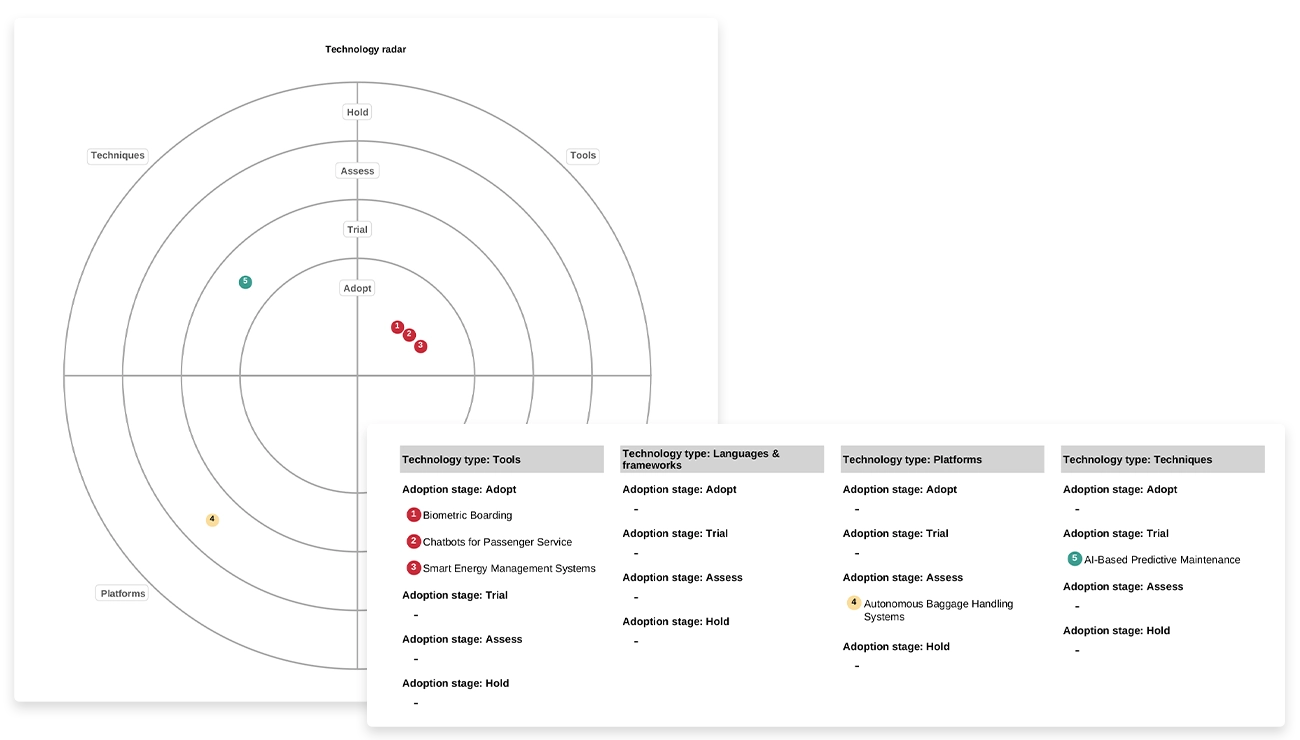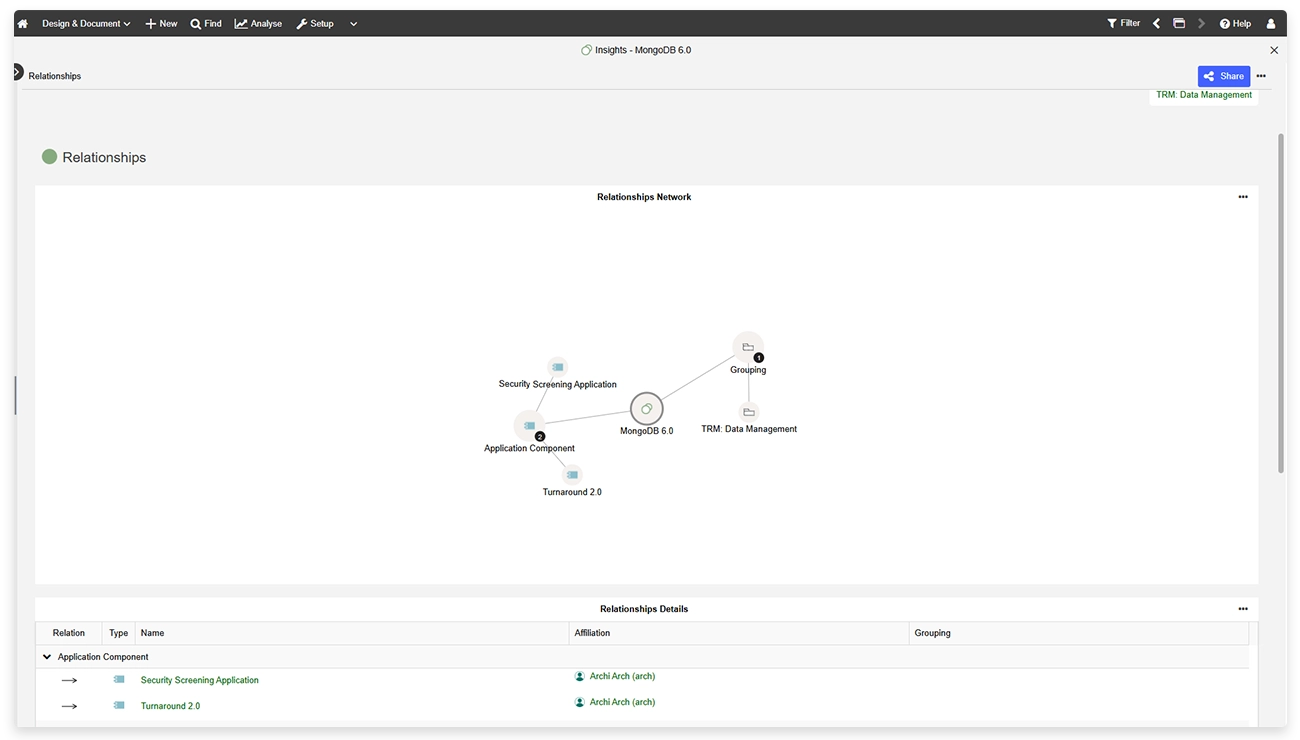Found this helpful? Share it with peers.
Innovation Moves Fast, Your Tech Decisions Must Too
New technologies emerge faster than most organizations can evaluate them. Agentic AI models advance monthly, new architecture patterns rise and fall, and frameworks appear that can reshape entire technology stacks. The real challenge isn’t staying informed – it’s understanding which innovations genuinely matter, and when.
This is where Technology Scouting makes a difference. Technology Scouting gives organizations a structured way to discover, evaluate, and act on emerging technologies before they impact their business. Done well, it creates a bridge between innovation, enterprise architecture, and technology portfolio management – ensuring every decision is grounded in relevance, maturity, and strategic alignment.
And the urgency is real. By 2028, 33% of enterprise software applications will incorporate agentic AI, and high-performing IT organizations already show 35% higher revenue growth and stronger margins. These aren’t abstract trends, they’re signals that technology choices are now a primary source of competitive advantage. In this blog, we’ll break down what Technology Scouting is, why it matters, and how organizations can operationalize it using proven frameworks and tools such as Technology Radars and modern enterprise architecture platforms.
What Is Technology Scouting?
Technology Scouting is the structured process of identifying, assessing, and integrating new or emerging technologies into business and IT strategy. Unlike simple ‘trend watching’, which focuses on what’s popular or exciting, Technology Scouting emphasizes what’s validated, relevant, impactful, and strategically aligned. It helps organizations answer critical questions, such as:
- Which emerging technologies should we monitor or explore?
- When should we adopt, trial, or retire them?
- How do they fit into our existing architecture and portfolios?
- What risks or opportunities arise if we act (or don’t)?
Within enterprise architecture, scouting plays a central role in shaping innovation. It transforms early signals into structured knowledge that influences lifecycle decisions, portfolio modernization, and capability planning. Without it, organizations risk chasing hype – or worse, falling behind.
Why Technology Scouting Matters
In the modern technology landscape, scouting has become a mission-critical discipline. Here’s why:
1. Competitive advantage shifts at the pace of emerging tech
Agentic AI, hyperscale cloud, low-code automation, and platform engineering are reshaping markets. Organizations that spot high-impact innovations early move faster, and smarter.
2. Fragmented scouting leads to missed opportunities
When teams explore tools independently, knowledge gets scattered across chats, notebooks, and email threads. Valuable insights never reach decision-makers.
3. Structured scouting brings measurable benefits
A consistent scouting practice supports:
- Early identification of transformative technologies
- Reduced risk of outdated or unsupported systems
- Stronger alignment between IT and business strategy
- Better portfolio rationalization and modernization decisions
- Faster time-to-adoption for technologies that generate advantage
Research shows that organizations that routinely evaluate emerging technology trends significantly outperform peers across digital transformation metrics.
The Core Stages of Effective Technology Scouting
A mature Technology Scouting function follows a repeatable lifecycle. While methodologies differ, four foundational stages remain consistent:
1. Discover (Spot Signals Early)
Monitor analyst research, academic publications, startup ecosystems, vendor roadmaps, conferences, developer communities, and internal experiments.
2. Evaluate (Assess Relevance and Impact)
Examine maturity, business fit, risks, architectural implications, and alignment with your capabilities and strategy.
3. Prioritize (Focus on What Matters Most)
Not all innovations require immediate attention. Identify the technologies with meaningful operational or strategic potential.
4. Integrate (Turn Insights into Decisions)
Feed validated discoveries directly into your architecture models, application portfolios, project proposals, and capability roadmaps.
Organizations that operationalize this lifecycle, supported by structured tools, shift from ad-hoc decisions to reliable, data-driven innovation.
Tools and Frameworks Behind Modern Technology Scouting
Technology Radar – Visualizing What’s Next
A Technology Radar is one of the most powerful tools for communicating scouting insights. It maps technologies by category (quadrants) and maturity (rings), typically including:
- Adopt – mature, proven, ready for broad use
- Trial – worth piloting
- Assess – early-stage, watch closely
- Hold – risky, unproven, or low relevance
Radars provide clarity at a glance. They turn scattered insights into a strategic, shareable overview that helps teams align, avoid redundancies, and prioritize consistently. Modern enterprise architecture platforms, such as ADOIT by BOC Group, offer integrated technology scouting solutions that combine:
- Radar visualization
- Portfolio repositories
- Evaluation and scoring frameworks
- Data-driven maturity insights
- Collaboration capabilities
- AI-supported lifecycle tracking
These ensure radars remain living, continuously updated resources – not static presentation slides.
Hint: See how to interpret and use Technology Radar with our free guide.
Visualize adoption stages and categories in your TechRadar directly in ADOIT
The Modern Scouting Tools Landscape: Core Capabilities
Advanced scouting solutions typically support:
- Central emerging-technology repository
- Radar visualizations for maturity and adoption
- Evaluation criteria and scoring frameworks
- AI-powered lifecycle insights (end-of-life, obsolescence, vendor signals)
- Integration with enterprise architecture models
- Linking discoveries to applications, projects, and capabilities
- Collaboration workflows for distributed scouting teams
The real value lies not just in tracking technologies, but in translating insights into decisions that shape the enterprise.
Common Pitfalls (and How to Avoid Them)
Even organizations with good intent often stumble. The most common pitfalls include:
1. Chasing hype
Adopting technologies because they’re trending, not because they solve real business problems.
2. No ownership
Without clear accountability, scouting data becomes outdated or inconsistent.
3. No integration into strategic planning
Insights live in slides or spreadsheets and never influence portfolios or roadmaps.
4. Static, outdated radars
A radar built once a year is irrelevant within months. Integrated EA tooling and AI-driven signals help keep insights accurate, fresh, and connected.
From Scouting to Strategy: Turning Insights into Action
Technology Scouting becomes transformative when its outputs flow directly into enterprise decision-making. High-performing organizations connect scouting to:
- Technology portfolio management – decide where to invest, maintain, or retire
- Technology lifecycle management – anticipate obsolescence and plan modernization
- Capability-based planning – align new technologies with business priorities
- Roadmap execution – accelerate adoption and avoid fragmented experimentation
When scouting feeds architecture workflows, organizations move faster from discovery → decision → deployment, turning early signals into measurable business advantage.
See where technologies are applied across projects and capabilities
Organizations Who Win Are the Ones Who Scout Well
Many organizations keep an eye on new technologies, yet the real challenge often appears when they try to understand what those signals mean for their future decisions. Technology Scouting gives you a way to bring structure to that flow of information. It turns scattered observations into something you can use and helps you decide which developments matter most.
When this work is supported by a platform such as ADOIT, the insight becomes easier to apply in everyday planning. You can follow how ideas evolve, see how they influence portfolios and capabilities, and understand where they create new strategic options. Over time, this builds a technology landscape shaped by informed choices rather than reactive moves. Organizations that work this way place themselves in a stronger position to absorb change and guide their direction with intent.







